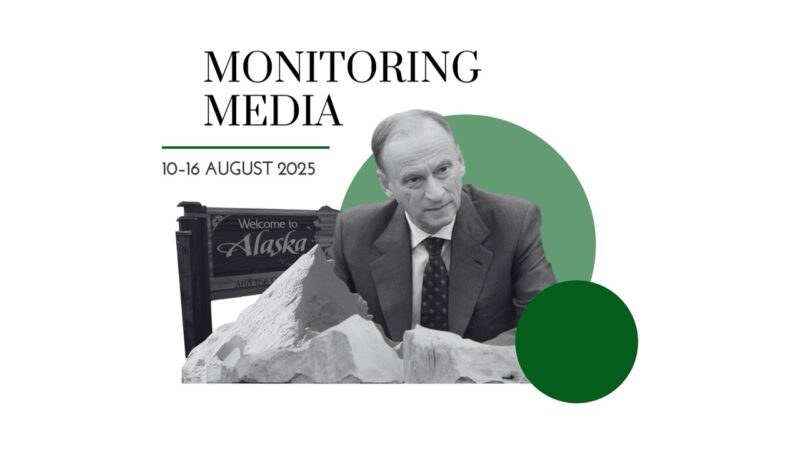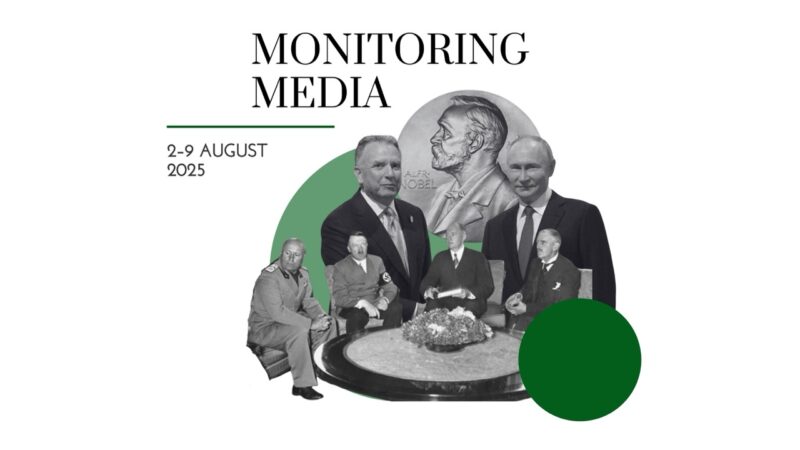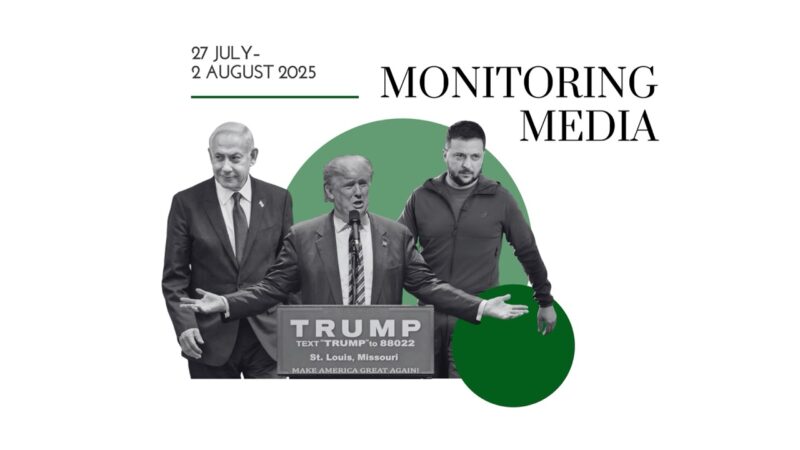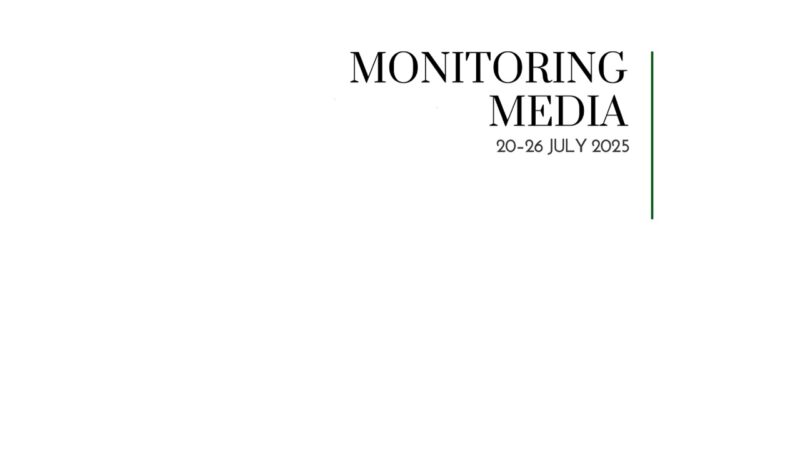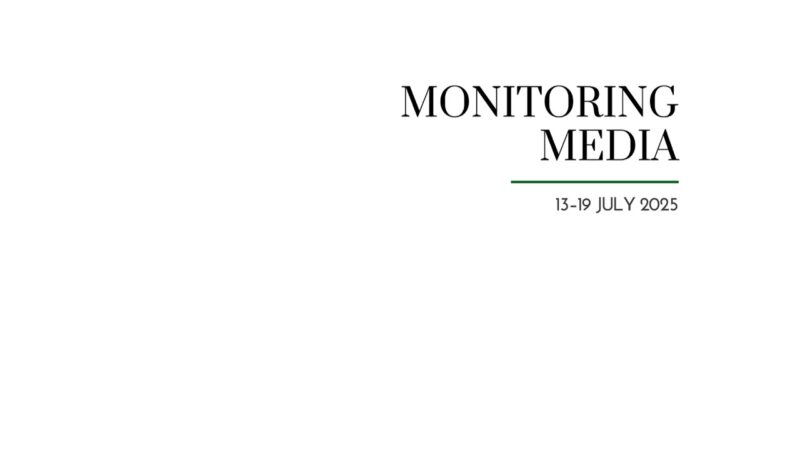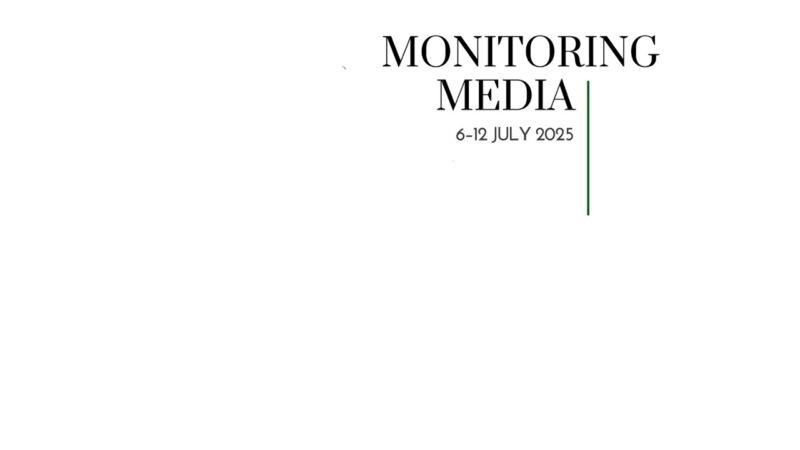NATO needs Ukraine

CIUS weekly report on North American media coverage of Ukrainian affairs, 7–13 July 2024
Four publications (The National Interest, Foreign Affairs, Foreign Policy, and The Globe and Mail) were selected to prepare this report on how Ukraine has been portrayed in the North American press during the past week. The sample was compiled based on their impact on public opinion as well as on their professional reputation, popularity among the readership, and topical relevance. These publications represent centrist viewpoints on the political spectrum.
This MMS report covers only the most-read and relevant articles about Ukraine, as ranked by the respective North American publications themselves in the past week. Its scope covers promoted articles on home pages and articles from special sections on Ukraine, with the hashtag #Ukraine, from the paper editions of the publications, and about Ukraine from opinion columns and editorials.
Featured topics
- The world and Ukraine: the best way for Ukraine to join NATO; NATO summit should create conditions for Ukraine’s victory; NATO needs Ukraine.
- Russia at war: Moscow has moved to a new war economy; Russia’s attack on Kyiv children’s hospital highlights Putin’s phony rhetoric.
MMS summaries
The best way for Ukraine to join NATO. M.E. Sarotte (Foreign Affairs) is convinced that Ukraine, like no other, has the right to become a NATO member. However, this is unlikely to happen at the 75th anniversary summit of the Alliance. Not all NATO member states are ready to see Ukraine in the alliance. In the future, the amount of support for Ukraine from the US and Europe is likely to decrease, which could play into Russia’s hands. Allies therefore need to consider how to ensure a successful future for Ukraine. According to the author, this is not “an altruistic act that can be put off until later; it’s an act of self-defense that demands implementation now.” NATO membership is the best mechanism that can guarantee Ukraine’s peaceful future.
There are at least two precedents that can help understand how Ukraine can become a member of the alliance in the near future, even in wartime—including Norway’s experience during the Cold War and West Germany’s path to NATO membership in 1955. Given the lessons of these precedents, Alliance leaders should encourage Kyiv to do three things: (1) define a temporary border that can be defended; (2) agree to self-limitations on infrastructure in unoccupied territory “with the important Norwegian disclaimer that these limits are valid only as long as Ukraine is not under attack or threat of attack”; and (3) commit to not using military force beyond this border except in self-defence, as the West Germans did. This will ensure security for most of Ukraine. According to Sarotte, “There’s room for creativity, because although NATO’s 1949 founding treaty does obligate allies to treat an attack on one as an attack on all, it doesn’t impose one-size-fits-all membership requirements, meaning that some countries have been able to negotiate bespoke terms. France, for example, remained an ally even after President Charles de Gaulle committed seemingly the ultimate dealbreaker in the mid-1960s—withdrawing from NATO’s integrated military command. Two other examples are even more relevant: Norway and West Germany, which both found ways to join the alliance despite, respectively, proximity to and conflict with Moscow.”
NATO summit should create conditions for Ukraine’s victory. David J. Kramer, John Herbst, and William Taylor (Foreign Policy) argue that NATO should take advantage of the progress made by the G-7 to ensure that Ukraine wins the war. Ukraine’s victory, according to Ukrainians, “means no Russian soldiers on Ukrainian territory, including Crimea; Russian accountability for the war crimes, crimes against humanity, and genocide that Russian forces have committed against Ukraine; and Russian payment for the destruction it has caused, estimated to be roughly half a trillion dollars and rising.” The United States and its NATO allies should take this definition of victory as a starting point. It is the fastest and best way to end Russia’s war against Ukraine. To bring Ukraine’s victory closer, Washington should take four steps. First, the White House should clearly declare that its goal is “to help Ukraine win and defeat Russia.” Second, the US and its allies should increase and accelerate the supply of weapons, new technologies, and assistance to Kyiv. Also, Washington should “allow Ukraine to use longer-range ATACMS missiles against targets in Russia out of self-defense—otherwise, it allows Russia sanctuary inside Russian territory to launch attacks against Ukraine without fear of retaliation.” Third, the White House should build on the successes achieved at the G-7 summit, “where the administration marshaled support for using the interest earned on Russia’s $300 billion in assets frozen by the West to securitize a $50 billion loan for Ukraine, to move to seize all $300 billion of those assets, not just the proceeds.” Fourth, President Joe Biden’s administration should recognize that progress on Ukraine’s NATO membership could be reversed if there is a reshuffle in the White House. On the other hand, inviting Ukraine to join NATO would signal to Moscow that it cannot effectively veto Kyiv’s aspirations. According to the authors, “The more weapons, technology, and assistance provided to Ukraine and the faster it is done, the more successful Ukraine’s outlook will be in defeating Russia. Success for Ukraine is difficult but by no means impossible. Failure is not an option.”
NATO needs Ukraine. Jorge Benitez (National Interest) declares that Kyiv needs NATO as much as the Alliance needs Ukraine. Kyiv can strengthen NATO with manpower, strategic depth, and combat experience: “NATO membership for Ukraine can provide a long-term solution to Russia’s desire and capabilities for aggression.” This is important, because NATO’s eastern member states are extremely vulnerable to Russian encroachment: “Estonia has a population of 1.3 million, Latvia has 1.9 million, and Lithuania has 2.7 million (5.9 million total). Their combined armed forces are about 47,950 active-duty personnel. In other words, these NATO members close to Russia have a combined population smaller than New York City’s (8.3 million people) and a combined military force size only marginally larger than that of the New York City Police Department (36,000 officers).” The situation was similar after the Second World War. Then, the alliance minimized the threat from the Soviet Union by inviting West Germany to join the Alliance: “Even a divided Germany was a significant power that made NATO stronger and safer.” Kyiv can play an even more crucial role in strengthening NATO’s security than West Germany. In the author’s view, Ukraine is a much stronger force that will make NATO stronger and more secure: “In terms of territory, Ukraine is larger than any European member of NATO and provides strategic depth that is currently lacking in NATO’s eastern borders with Russia. In terms of population, Ukraine has about 35 million people who have shown their willingness to fight and sacrifice to defend their democracy. Ukraine also has a military of approximately 800,000. These troops have combat experience and, unlike the majority of NATO’s forces, are located in the region of NATO’s greatest vulnerability.” According to Benitez, “Ukrainian NATO membership eliminates debates about Moscow’s intent and capabilities because, no matter Russia’s future intent or capabilities, membership for Ukraine makes NATO so strong in the east that Russia would not dare attack any NATO members.”
Moscow has moved to a new war economy. Andrei Kolesnikov (Foreign Affairs) argues that given the huge losses in Russia’s war against Ukraine, state intervention in the economy will not save Moscow. The appointment of Andrei Belousov, a state economist with no military experience, as Minister of Defence of the Russian Federation was one of the steps taken to try save the national economy. The author believes that his appointment was due to a number of reasons: (1) Russia’s huge military losses; (2) significant expenditures on the defence sector, which accounts for almost one-third of Russia’s state budget; (3) the need for better management of Russian military technologies that would allow Moscow to achieve “‘technological sovereignty’—complete self-sufficiency—in civilian industries, as well”; and (4) attempts to maintain social spending while increasing funding for the defence sector. In this context, Minister Belousov would seem to be the right choice: “as a product of the mathematical school of Soviet economics, he has total faith in the ability of the supreme authorities to calculate everything, and that state money and state interventions can solve any crisis.” However, this approach is identical to the one that undermined the power of the USSR and caused its collapse: “unsustainable growth of defense spending and the relentless militarization of the economy.” Today, Russia’s new war economy model combines “state interventionism, a dominant emphasis on the military-industrial complex, and import substitution, with a market economy in different areas, including for parallel imports of various Western products to satisfy consumer demands.” According to Kolesnikov, “Like some of his Soviet predecessors, Putin seems to be wagering that huge military expenditures managed by economic number crunchers can save rather than bankrupt the country. But as the late communist regime learned too late, an economy built on war cannot survive forever, no matter how good the planners’ math.”
Social media platforms have been thoroughly infected by Kremlin-produced disinformation. The editorial board of the Globe and Mail warns that users of the social media platform X (formerly known as Twitter) are largely unaware of how extensively the site has become corrupted as a tool for spreading disinformation, a situation that must change. The US Department of Justice recently uncovered a Kremlin-operated “bot farm” on X designed to disseminate Russian propaganda about the invasion of Ukraine. This discovery should cause alarm in the public and governments concerning the threat of an ecosystem that is capable of injecting malign propaganda into Western democracies. A recent report revealed that 71 percent of Canadians have been exposed to Russian disinformation about the Russo-Ukrainian war, with many either believing or uncertain about the content they encountered. This disinformation originates from Russian-controlled media like RT and Sputnik, as well as “regime-aligned influencers” on social media platforms, according to DisinfoWatch, a monitoring project at the Macdonald-Laurier Institute. The US government’s findings highlight that it’s not just Kremlin-aligned influencers spreading propaganda on X but the Kremlin itself, using AI-driven bot farms to create and manage fake social media users. These bots perpetuate Russian narratives and even engage with real users. The Justice Department has seized servers and email addresses linked to the bot farm, and X Corp. has suspended the fake accounts. However, this response is insufficient, the authors argue. DisinfoWatch recommends improving media literacy, launching public awareness campaigns, and urging political leaders to address disinformation. Ultimately, social media companies, which profit from the spread of disinformation, should take primary responsibility for warning users about the potential for foreign government attempts to harm civil society and weaken democracies. As the authors note, “it should, first and foremost, be up to those who profit from it” to protect society from this threat.
Canada must bolster defence amid rising global threats. Roland Paris (Globe and Mail) argues that Canada’s announcement at the recent NATO summit that it would purchase 12 new submarines may have temporarily eased the pressure on Prime Minister Justin Trudeau, who faced criticism from allies for Canada’s lagging defence spending. Despite Trudeau’s steps toward meeting NATO’s 2% defence spending commitment, Canada is still years away from the target. The neglect of military capabilities since the end of the Cold War has left Canada in a precarious position as global tensions rise. With European leaders warning of a new “pre-war” era due to Russia’s warmongering, there is a growing recognition of the need to prepare for potential large-scale conflicts. Russia’s President Vladimir Putin has made clear his imperial ambitions, posing a significant threat to European peace. His historical narratives and recent actions, such as the invasion of Ukraine, reflect his goal of restoring Russian dominance. Paris underscores that the West must support Ukraine and strengthen NATO in order to deter further Russian aggression. As the old Roman saying goes, “if you want peace, prepare for war.” Canada, often seen as a “freeloader” in NATO, must reassess its defence strategy, according to the author. The familiar world of assumed peace is gone, and failing to rebuild military readiness could lead to a costly and preventable conflict: “The price of rebuilding our military will be enormous. But failing to do so could be substantially more costly.”
Russia’s attack on Kyiv children’s hospital highlights Putin’s fraudulent rhetoric. Ian Garner (Globe and Mail) notes that the 8 July strike on the Okhmatdyt, a major children’s hospital in Kyiv, revealed the brutal reality of Russia’s war against Ukraine, contradicting Moscow’s propaganda of “saving” Ukrainian children. Shocking scenes of bloodied, crying children pulled from the rubble were broadcast globally, highlighting the discrepancy between Russia’s narrative and the actual consequences of its actions. Russian leader Vladimir Putin has repeatedly accused Ukraine of targeting children in eastern parts of the country (Luhansk and Donetsk oblasts), using this claim to justify the invasion. However, the attack on the hospital, along with the forced deportation of thousands of Ukrainian children to Russia for adoption, demonstrate a systematic erasure of Ukrainian identity that amounts to cultural genocide. The deaths of children at Okhmatdyt are part of the larger toll, with many more subjected to a Russian-imposed education that denigrates Ukrainian culture and language. In Russia, state propaganda teaches young Russians that their country is surrounded by enemies intent on erasing their culture, framing the West, NATO, and even the LGBTQ community as threats. Putin’s worldview denies Ukraine legitimacy as a sovereign state, viewing it as an extension of Russia. This ideology positions the invasion as a fight to save Russian culture by forcibly assimilating Ukrainians and eliminating Western influences. In this twisted logic, destroying Ukrainian culture and people is seen as an act of salvation, with the destruction of Ukrainian culture lowering the chance of Russia being “infected” by Westernism. The attack on the Kyiv hospital, thus, is part of a broader campaign to Russify Ukraine and secure what Putin sees as Russia’s “rightful” historical and cultural place. As Garner notes, “the more Ukraine suffers, the closer Moscow’s victims come to returning to and remaining in their rightful historical and cultural place. For the adherents of this ideology, the contradiction that seems obvious simply does not exist. Russia simultaneously destroys Ukrainian culture and saves Ukrainians, kills children and saves them, and wages war to make peace.”
